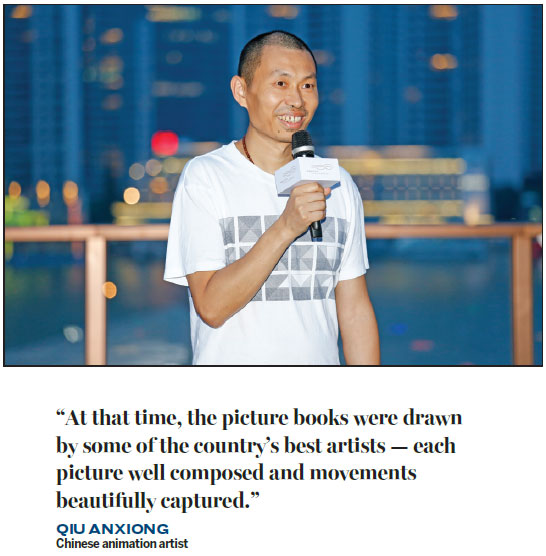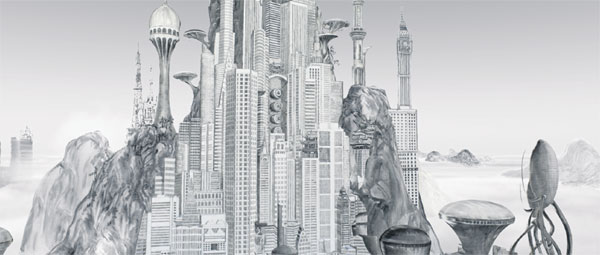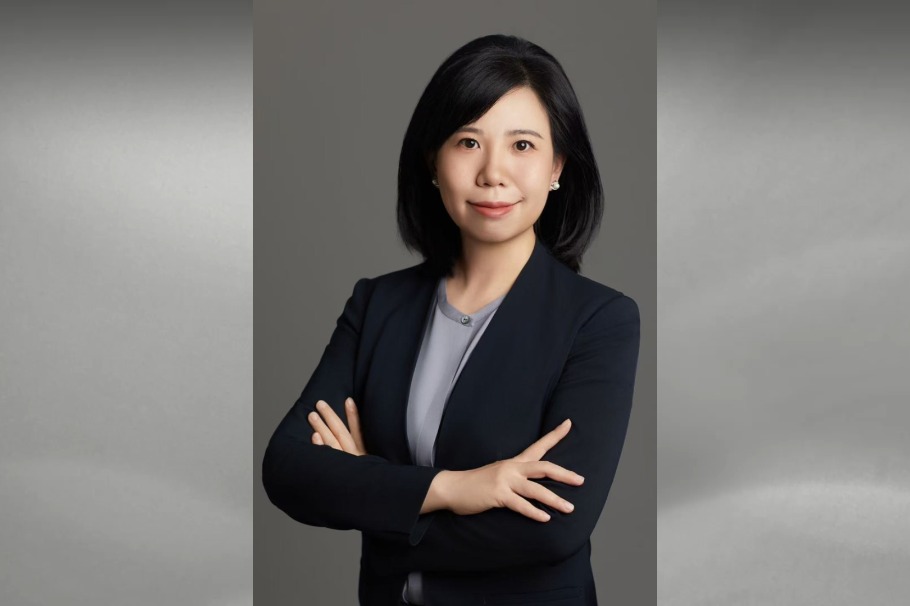Every picture tells a story

Celebrated animation artist portrays modern themes from a Chinese perspective
When he was a child, Qiu Anxiong would spend whole days reading picture books at a book rental stall at the side of the street.
It cost no more than 1 fen - less than a cent or a penny - to rent a copy and, fen being the smallest unit of Chinese currency, Qiu would read to his heart's content.
He was born in 1972 and spent his childhood and youthful years in Sichuan. Thousands of picture books were published in China during the 1970s and '80s. They were in black and white, consisting of dozens of pictures, each depicting a scene on a page, with a short text like a subtitle at the bottom to tell a story.
| Chinese animation artist Qiu Anxiong's work. Qiu is holding a solo exhibition at Fosun Foundation in Shanghai until Oct 7, presenting an animation trilogy he created over the past 12 years, The New Book of Mountains and Seas. Photos Provided to China Daily |
As a child, he was so intrigued by some of the books that he would read them repeatedly.
"At that time, the picture books were drawn by some of the country's best artists, each picture well composed and movements beautifully captured," Qiu recalls, during an exclusive interview with China Daily, at his studio in an industrial warehouse in suburban Shanghai's Baoshan district.
A fascination with pictures that tell stories stayed with him as he grew up and became a contemporary artist working with animation. An important figure of the video art field in China, Qiu has held exhibitions in Paris, New York and Sao Paulo, with his creations being collected by institutions such as the Museum of Modern Art in New York, the University of Oxford and Kunsthaus Zurich.
Qiu is holding a solo exhibition titled The Mirage of Mountains and Seas at Fosun Foundation in Shanghai till Oct 7, presenting an animation trilogy he created over the past 12 years, The New Book of Mountains and Seas.
Exhibiting alongside him is Swiss artist Yves Netzhammer, with a body of work titled Refurnishing Thoughts, featuring minimalistic drawings, installations and video projects that occupy the second floor of the Fosun Foundation exhibition hall, which overlooks the Bund.
Netzhammer and Qiu worked together in 2014, when Qiu was invited by the Swiss Arts Council for a three-month residency.
"His drawings are created in a rational and calm way, and yet his imagery is sensitive and surrealistic," Qiu says."There are things in common between our work, and his creations are based more on personal imagination and experience."
In Switzerland, they worked on a joint project named Tableau No 1, featuring drawings of supernatural beings by Netzhammer and characters that Qiu created to name them, alongside texts that tell stories about them.
At Fosun Foundation they decided to exhibit together, in order to "place a Chinese and Western artist together in dialogue in the same space," says Jenny Wang Jinyuan, president of the foundation. "The two employ their respective artistic strategies to express how they understand, imagine and consider urban space and modern life."
An important artist on China's contemporary art scene, Qiu graduated from Sichuan Art Academy. The school nurtured some of China's most successful painters, some of whom taught there for years. Qiu himself used to study with Zhang Xiaogang and Ye Yongqing, who encouraged students to focus on creative ideas rather than technique.
Qiu went on to study at Kunsthochschule of Kassel University, in Germany, when he decided to adopt the medium of animation to realize his dream of telling stories with pictures in motion.
The university had a strong animation studio. A graduate won an Oscar in the 2000s. In its archives, he watched lots of animation and was greatly inspired by an African artist's work, made simply of charcoal drawings.
The simple approach showed him that animation didn't necessarily require a large team and he could be single-handedly in charge of the whole process of realizing his ideas. With a good computer and the right software, he also invested in an SLR camera before starting to work.
Qiu was fascinated with the magical creatures depicted in Shan Hai Jing (The Book of Mountains and Seas), the 2,000-year Chinese book of folklore, and ancient customs."Imagine a primitive man from thousands of years ago landing in modern civilization, and he would find lots of magic beasts and monsters all around," Qiu says, explaining the ideas behind his animation trilogy.
With such a perspective, Qiu depicted giant beasts that drill oil from the ground and iron birds that drop eggs from the sky. It took him more than two years to create the 31-minute animation film, featuring images in the style of Chinese ink art and an allegorical depiction of the energy crisis.
In 2009, he completed the second episode of the series, about the fear and anxiety over biological disasters. The third and final part didn't come out until early this year, a 3-D film lasting 25 minutes that depicts the confusion and struggle of modern people in a high-tech world, where the fine line between reality and virtual reality is often blurred.
zhangkun@chinadaily.com.cn

(China Daily Africa Weekly 09/01/2017 page20)
Today's Top News
- China warns about Japan's intended military buildup
- China urges EU to halt anti-subsidy probes
- Experts: Lai not freedom fighter, but a pawn of the West
- Hainan evolves as gateway to global markets
- Opening up a new bridge between China and world
- Tour gives China-Arab strategic trust a boost































